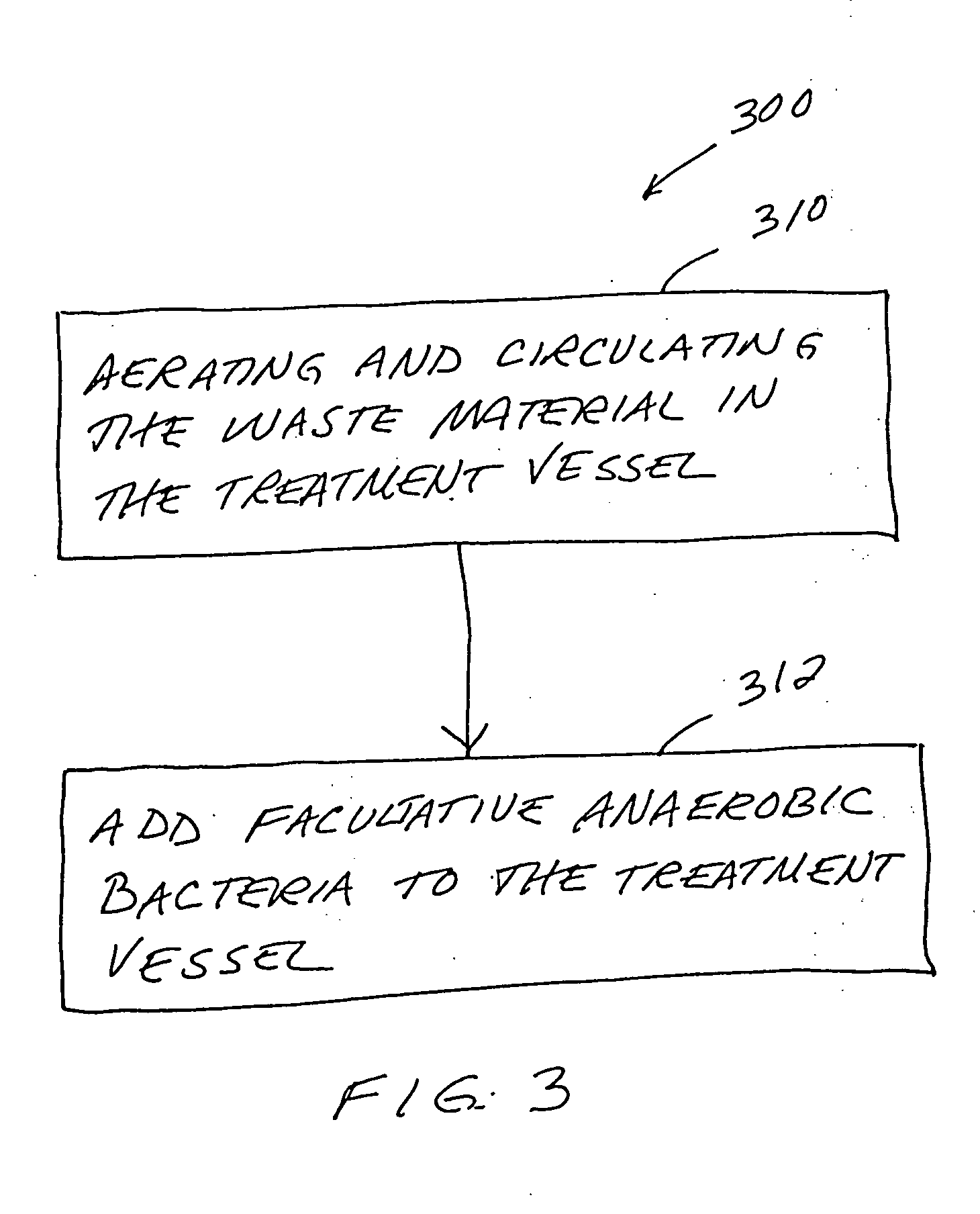Method for recovering a disposal trench with a biomat slime, and method for operating a waste treatment vessel
a waste treatment vessel and biomat technology, applied in biological water/sewage treatment, water/sludge/sewage treatment, chemical apparatus and processes, etc., can solve the problems of soil converting ammonia in effluent into nitrates, inefficient consumption or breaking down of anaerobic bacteria,
- Summary
- Abstract
- Description
- Claims
- Application Information
AI Technical Summary
Benefits of technology
Problems solved by technology
Method used
Image
Examples
Embodiment Construction
[0039]FIG. 1 shows a flow chart that illustrates a method 100 in accordance with the present invention. As shown in FIG. 1, method 100 has a single step 110 of adding facultative anaerobic bacteria to an effluent that flows into a soil-based disposal trench that has a biomat slime.
[0040] The effluent includes ammonia, while the soil-based disposal trench is largely aerobic. Unlike the strict aerobes in the soil, which are ineffective in breaking down a biomat slime due to the moisture present in the slime, facultative anaerobic bacteria consume the biomat slime.
[0041] In accordance with the present invention, facultative anaerobic bacteria are added to the effluent in sufficient numbers over a sufficient time to insure a continual reduction in, and eventual elimination of, the biomat slime. Thus, the facultative anaerobic bacteria is added to the effluent so that the facultative anaerobic bacteria consumes the biomat slime faster than the biomat slime can be formed. Facultative an...
PUM
 Login to View More
Login to View More Abstract
Description
Claims
Application Information
 Login to View More
Login to View More - R&D
- Intellectual Property
- Life Sciences
- Materials
- Tech Scout
- Unparalleled Data Quality
- Higher Quality Content
- 60% Fewer Hallucinations
Browse by: Latest US Patents, China's latest patents, Technical Efficacy Thesaurus, Application Domain, Technology Topic, Popular Technical Reports.
© 2025 PatSnap. All rights reserved.Legal|Privacy policy|Modern Slavery Act Transparency Statement|Sitemap|About US| Contact US: help@patsnap.com



